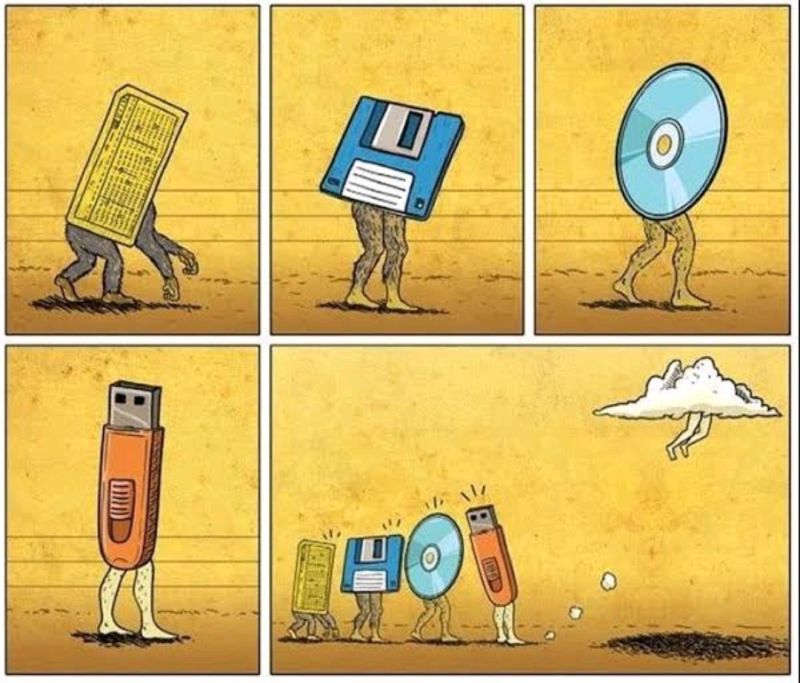advertisement
Cave Paintings to Cloud Computing: The Evolution of Data Storage

How we collect and store information has played a critical role in preserving knowledge and driving progress throughout human evolution. As we move further into the modern digital age and see Artificial Intelligence (AI), Machine Learning (ML), the cloud and the Internet of Things (IoT) transform how we interact with technology on a daily basis, the need for reliable storage solutions will continue to grow. The rising volume of data in enterprise and cloud computing are driving changes in data management and storage techniques across industries. These developments are reflected in a recent forecast, which shows that the data storage market is predicted to reach $777.98 billion by 2023 due to high adoption of cloud storage technology and external data storage devices.
Accelerated digitalisation offers us insight into the evolution of data storage, which spans from ancient cave art to the modern era of Hard Disk Drives (HDDs), Solid-State Drives (SSDs) and beyond. Each stage of progress was built on the foundations laid by its predecessor. By examining the key milestones and breakthroughs that have shaped the history of data storage, we can gain valuable insight into how we have arrived at the present and what the future may hold for data specialists.
From Bedrock to the Da Vinci Code
advertisement
The history of data storage can be traced back to the earliest forms of human expression. In prehistoric times, cave art served as a means of preserving the stories and key learnings of the Neanderthals for future generations. These visual documents, narrating historical events, have been with us ever since. In the Middle Ages, for example, there were prominent murals, such as the renowned Bayeux Tapestry of 1066, that show important battles and victories. And even today, this form of art is still a popular means of capturing contemporary events and/or expressing criticism (e.g., the Belfast Murals or artists like Banksy).
Although these early forms of data storage may seem rudimental in comparison to our current digital standards, they served as the foundation for preserving information for future generations. In other words, data. These innovations laid the brickwork for managing information.
Rock Around the Hard Disk Drive
advertisement
The 1950s were also an important time for data storage. The decade saw two revolutionary advancements shape the industry: magnetic tape and the Hard Disk Drive (HDD). The adoption of magnetic tape in 1951 brought about a revolutionary transformation in data storage capabilities. Magnetic tape offered high-capacity storage and held data that was easy to access. This made it an ideal choice for the early varieties of mainframe computers. Magnetic tape became a reliable medium for storing vast quantities of data, which enabled organisations an opportunity to efficiently manage, retrieve and transport their data.
These advancements in storage technology marked major breakthroughs in data storage during the 1950s and 1960s. They laid the groundwork for future developments, driving faster processing, enhanced computing capabilities and greater flexibility towards the management of data. These milestones set the stage for the continued evolution of data storage technologies and their profound impact on various industries and everyday life.
The Solid-State of Things
advertisement
In 1988, a revolutionary storage medium was introduced to the market: the “System Flash”. Two years later, commercial flash Solid-State Drives (SSDs) emerged, revolutionising data storage with their exceptional speed, durability and energy efficiency. These SSDs, with no moving parts, provide lightning-fast access to information, significantly reducing access times and enhancing overall system performance. Furthermore, SSDs are smaller, quieter and less fragile because they have no moving parts. They have become an integral part of modern computing. SSDs facilitate seamless multitasking and efficient handling of data sets for the user.
While SSDs and HDDs have already transformed the storage landscape, the future holds even more exciting possibilities. Emerging technologies like DNA data storage offer unparalleled data density and long-term stability. By encoding information within a DNA molecule, vast amounts of data can be stored in a minuscule space, revolutionising storage capacity. A single gram of DNA is estimated to have the capacity to store 215 petabytes (or 215 million gigabytes) of data. Moreover, holographic storage techniques show promise in creating three-dimensional data storage systems, potentially unlocking new dimensions of information preservation. These advancements will continue to shape the future of data storage and expand the possibilities for efficient and secure data management.
From early data storage methods to today’s SSDs, significant progress has been made. And with further advancements in existing storage solutions such as Helium HDDs, OptiNAND™, UltraSMR, HAMR and PMR technology, or the adoption of new technologies like DNA data storage and holographic storage, innovation will continue to transform how we store and manage data, unlocking new realms of knowledge and creativity for decades to come.